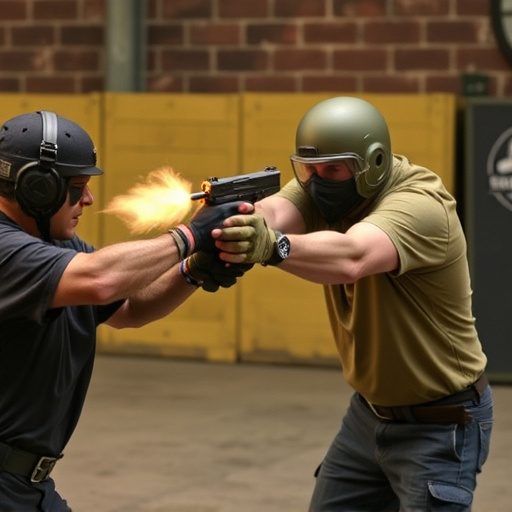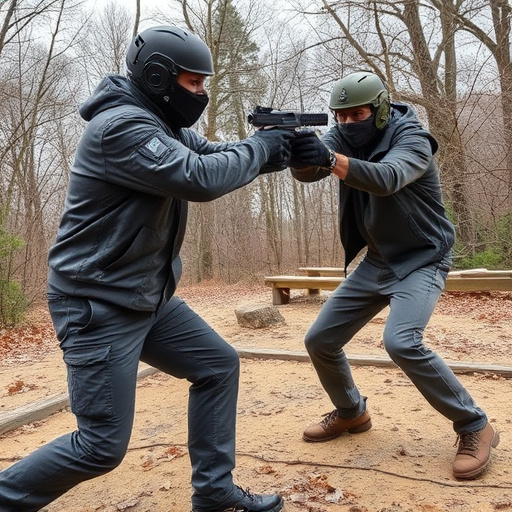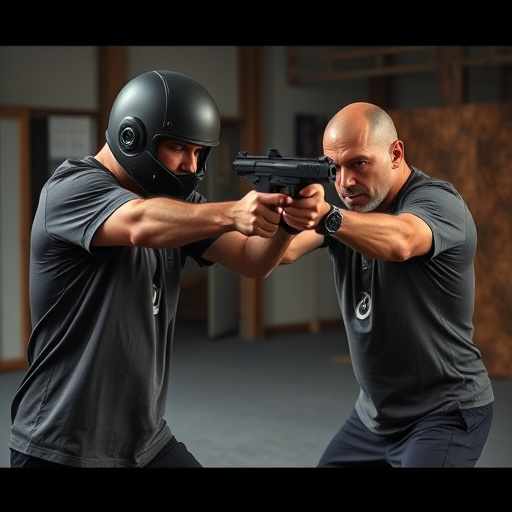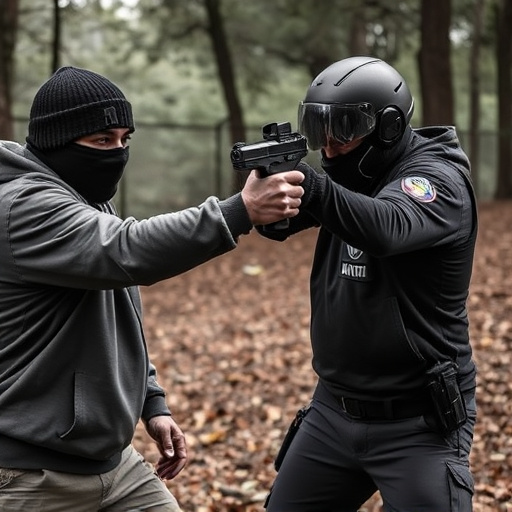Compact stun guns with built-in chargers rely on high-frequency electrical pulses (20-150 kHz) for powerful, effective shocks that disable targets quickly. Advanced electronics enable precise control, safety features, and eco-friendly USB-C charging. Higher frequencies enhance energy transfer for deeper penetration, but require safe handling techniques to prevent accidental arcs or discharges.
“Discover the power behind stun guns with our in-depth look at electrical pulse frequency—a critical factor in their effectiveness. We explore how different pulse frequencies impact stun gun performance, focusing on the advantages and unique features of compact models equipped with built-in chargers. Additionally, we delve into safety considerations when using high-frequency pulses, offering insights for informed choices. Whether you’re considering a compact stun gun or seeking to understand technology, this guide provides valuable information.”
- Understanding Electrical Pulse Frequency in Stun Guns
- Compact Stun Guns: A Review of Built-in Charger Options
- How Pulse Frequency Impacts Stun Gun Effectiveness
- Safety Considerations for Using High-Frequency Pulses
Understanding Electrical Pulse Frequency in Stun Guns

Electrical pulse frequency is a critical aspect of stun guns, especially for compact models like the compact stun gun with built-in charger. This frequency refers to the number of electrical pulses delivered per second, measured in Hertz (Hz). Higher frequency typically means more powerful shocks, as each pulse delivers a rapid and intense electric current.
Stun guns with higher pulse frequencies, often exceeding 150 Hz, are designed to disrupt muscle control in the target, causing temporary paralysis and disorientation. This makes them effective for self-defense purposes. The compact stun gun with built-in charger, for instance, may utilize advanced electronics to deliver precisely controlled pulses, ensuring both effectiveness and user safety while offering convenience through integrated charging capabilities.
Compact Stun Guns: A Review of Built-in Charger Options

Many users prefer compact stun guns for their portability and convenience, especially those models featuring a built-in charger. These devices offer a quick and easy solution for self-defense, eliminating the need to carry additional accessories like external chargers or batteries. The built-in charger option is particularly appealing for travelers and outdoor enthusiasts who might find themselves in remote areas without access to power outlets.
Compact stun guns with integrated charging systems typically employ USB-C ports, allowing users to charge their devices through a standard smartphone charger or even power banks. This versatility ensures that these stun guns remain fully charged and ready to use whenever needed. Moreover, the ability to recharge via USB is an eco-friendly approach compared to traditional battery disposal, making it a sustainable choice for responsible individuals.
How Pulse Frequency Impacts Stun Gun Effectiveness

The electrical pulse frequency in stun guns plays a pivotal role in determining their effectiveness. A higher pulse frequency, typically measured in kilohertz (kHz), means more electrical pulses are delivered per second, which can enhance the stun gun’s impact. This is particularly important for compact stun guns with built-in chargers, where size and weight constraints necessitate efficient energy transfer to ensure a powerful yet controlled shock.
Higher frequency pulses can penetrate the body more effectively, disrupting muscle control and causing involuntary contractions. This results in quicker incapacitation of the target, making these stun guns especially useful for self-defense scenarios. Moreover, advanced compact stun guns often incorporate adjustable pulse frequencies, allowing users to customize the level of force based on their needs, ensuring both effectiveness and safety.
Safety Considerations for Using High-Frequency Pulses

When using high-frequency pulses in stun guns, especially in compact designs like a compact stun gun with built-in charger, safety should be paramount. These devices operate on electrical pulses that can reach up to 100,000 volts, delivered at frequencies ranging from 20 to 150 kHz. Such high voltage and frequency can pose significant risks if not handled correctly. Misuse or accidental discharge could lead to severe electric shocks, burns, or even cardiac arrest in sensitive individuals.
Users of compact stun guns must be aware of proper handling techniques, including keeping the device oriented away from bodies or metal objects to minimize the risk of electrical arcs or sparks. Regular maintenance and inspections are crucial to ensure the device remains safe and effective. Additionally, users should be trained on how to respond in case of accidental discharge, knowing when to seek medical attention, and understanding the limitations and capabilities of their compact stun gun with built-in charger.
In conclusion, understanding electrical pulse frequency in stun guns is paramount for both effectiveness and safety. As discussed, compact stun guns with built-in chargers offer convenience, and their performance heavily relies on the pulse frequency. Higher frequencies enhance stun capabilities but also raise safety concerns. Thus, choosing a well-designed compact stun gun with a balanced pulse frequency ensures optimal protection without compromising power. Always prioritize safety when considering any stun device.
